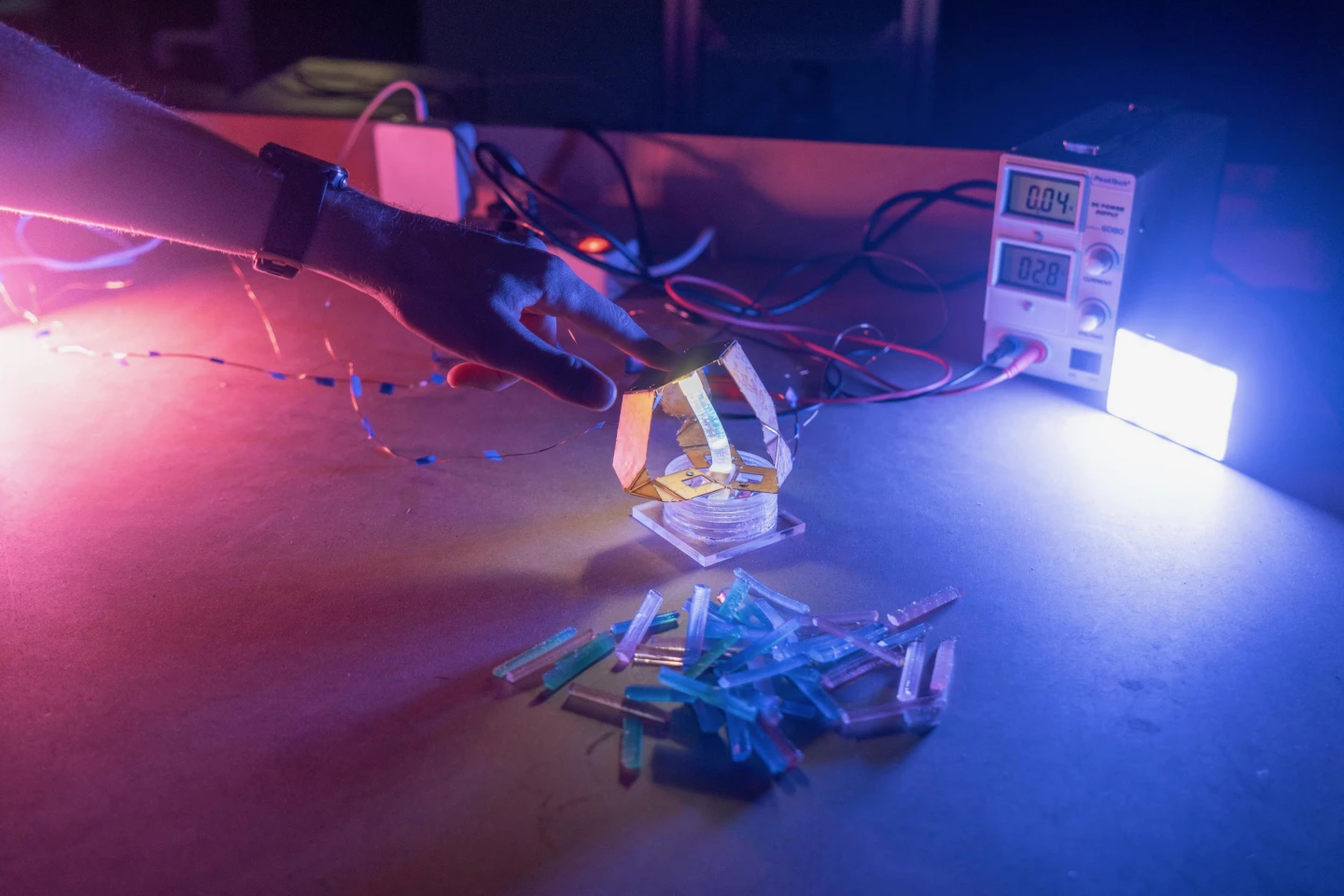Soft robotic devices often need to sense both mechanical deformation and changes in temperature, requiring multiple integrated sensors. ChromoSense technology, however, combines both functions in one simple, robust, color-changing device.
Currently in development at Switzerland's EPFL research institute, the inexpensive ChromoSense setup is based around a single translucent rubber cylinder with a white LED at the top and a mini spectral meter at the bottom. The cylinder is divided into three stacked sections.
The top section is made up of three longitudinal sub-sections which are dyed red, green and blue. These run lengthwise down the top section, sort of like the segments of a mandarin orange.
The middle section is much shorter, and incorporates a thermochromic dye which desaturates from a default rich yellow color when heated (not unlike a mood ring or color-changing shirt). At the bottom is the third section, which is optically neutral.

When the LED is activated, light travels from it down through all three sections, ultimately being detected and analyzed by the spectral meter.
If the cylinder gets bent to one side, the colored sub-sections (in the top) will compress shorter on that side and stretch longer on the other. This means that the spectral meter will receive less of the compressed color(s) and more of the stretched one(s). And if the cylinder remains straight but gets stretched or compressed, the proportions of the three colors will stay equal, but their intensity will diminish or increase respectively.
"Imagine you are drinking three different flavors of slushie through three different straws at once: the proportion of each flavor you get changes if you bend or twist the straws," said the lead scientist, Prof. Jamie Paik. "This is the same principle that ChromoSense uses: it perceives changes in light traveling through the colored sections as the geometry of those sections deforms."
The middle section also gets in on the act, contributing more or less yellow depending on the ambient temperature. The third section mixes the light from the top and middle sections into one homogenous signal for easier analysis by the spectral meter.

It is hoped that once ChromoSense is developed further, it could find use not only in soft robotics but also wearable technologies such as force-sensing assistive exoskeletons or performance-monitoring athletic wear.
A paper on the research was recently published in the journal Nature Communications.
Source: EPFL







